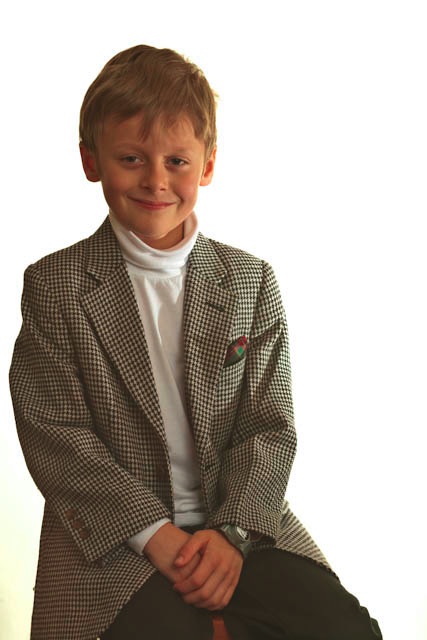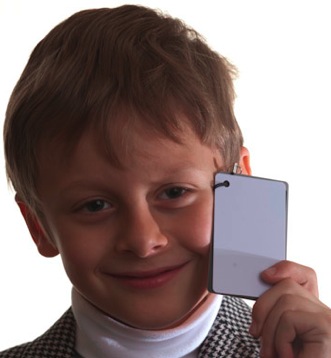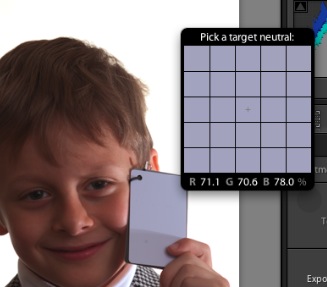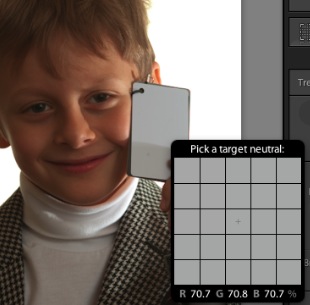A few thoughts on color balance
If accurate sound reproduction is your goal, then listening to the human voice (no, not some drug addled rock star; try German lieder or opera) or the piano (the one made by Steinway, not Roland – no electronics are involved) is the most critical test.
Humans know how a piano or human voice should sound. There is no such capability when it comes to electronic instruments as there is no ‘standard’ to refer to. This whole concept of a known reference is as valid for judging pictures as it is for determining accurate sound reproduction. With human subjects the equivalent of the piano or voice is the color of the subject’s flesh. We know what accurate flesh tones are. That is a known reference point.
Each year we take a studio portrait of our boy to document his early years. Inevitably, color balance is all over the place and adjustments need to be made.
No one has ever accused the Canon 5D of accurate color balance with artificial light sources, but a small investment in a white balance card easily fixes that.

Winston at seven. 5D, f/5.6, three Novatron flash heads, ISO 50
It takes seconds to do.

With the white balance card
The subject holds the card and a test snap is made. Later, in Lightroom, the eye dropper in the Develop module is simply placed over the white card and clicked.

Before
This renders the card neutral in shade, and all other colors are adjusted accordingly.

After
And the result, true skin tones and all, is at the beginning of this piece. Note the substantial drop in the Blue component in the ‘After’ picture.
There’s no need to restrict this approach to the studio. Place the card in a landscape, for example, and the result is the same. Add proper screen and printer profiling and true colors are a snap – no more messing about with sliders and suspect visual memory.
If you routinely take pictures in identical lighting, it’s easy to save a preset for the color balance adjustment in Lightroom, obviating any future need to use the white balance card in like lighting. Useful for studio work where lighting can be replicated exactly.
You can buy white balance cards for a few dollars or make your own from a nice piece of white card. There’s no cheaper way of getting true colors and when it comes to flesh tones the issue is binary – they are either right or wrong. My white balance card includes an 18% reflectance grey card which is also useful for exposure measurement.